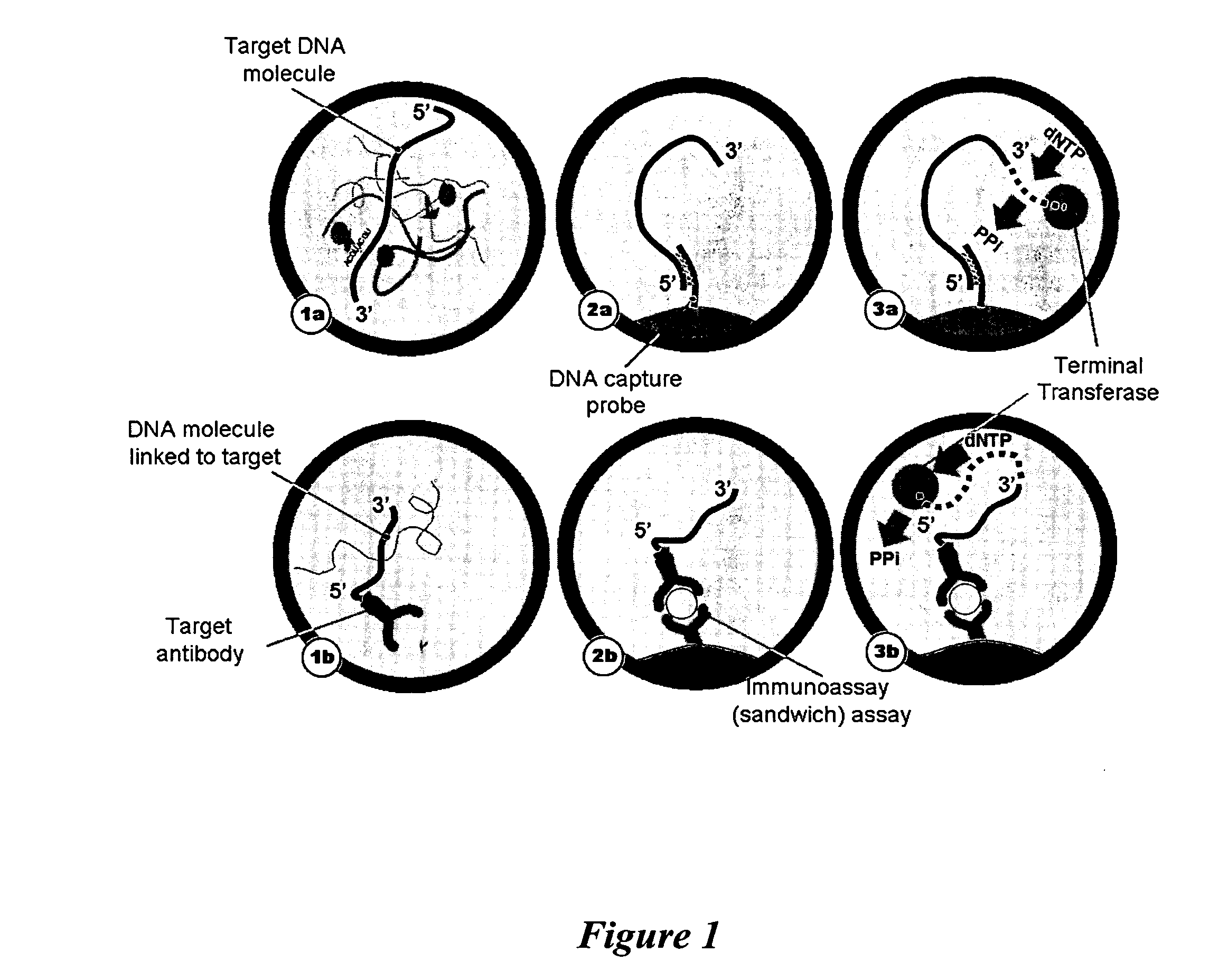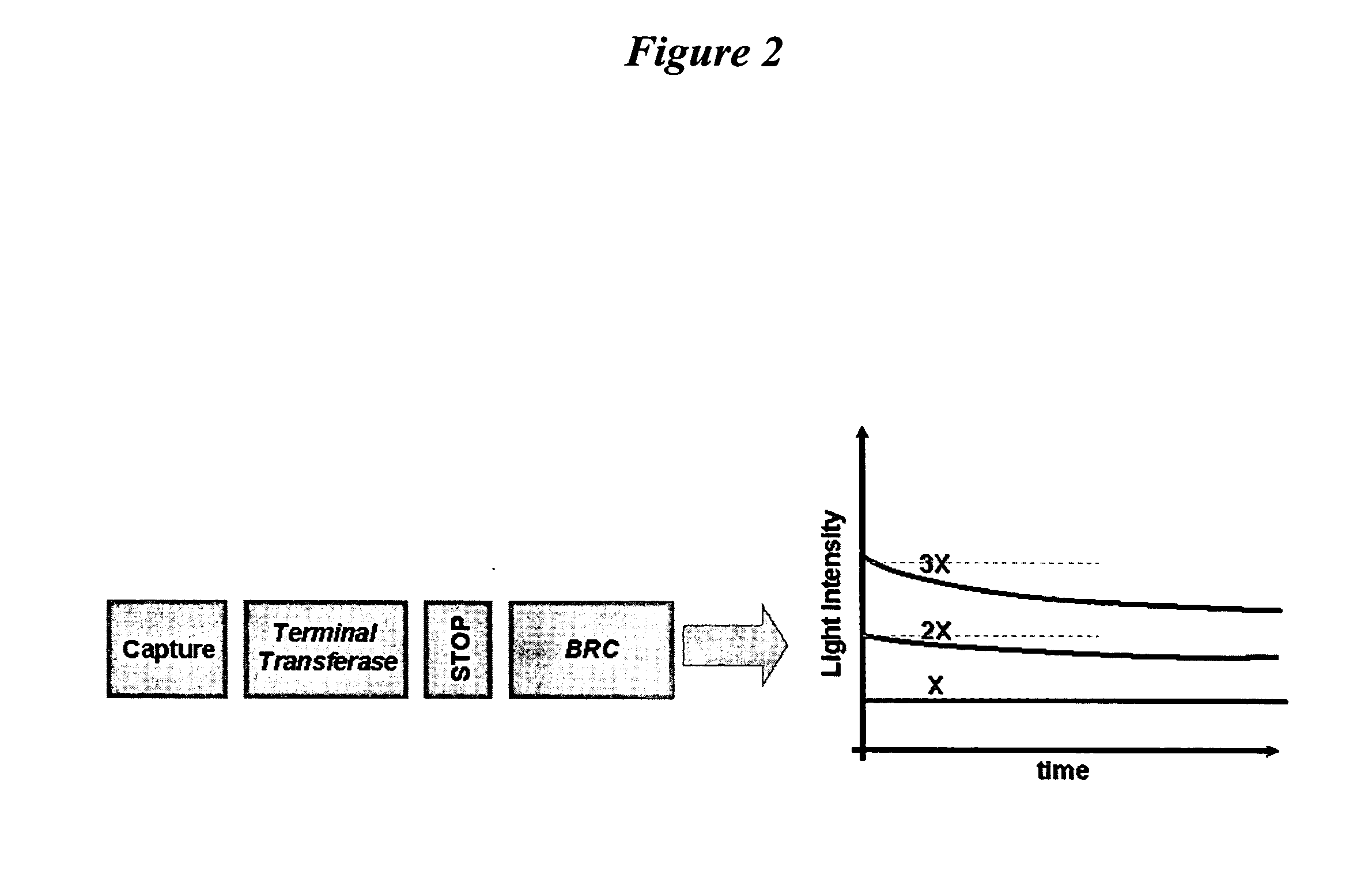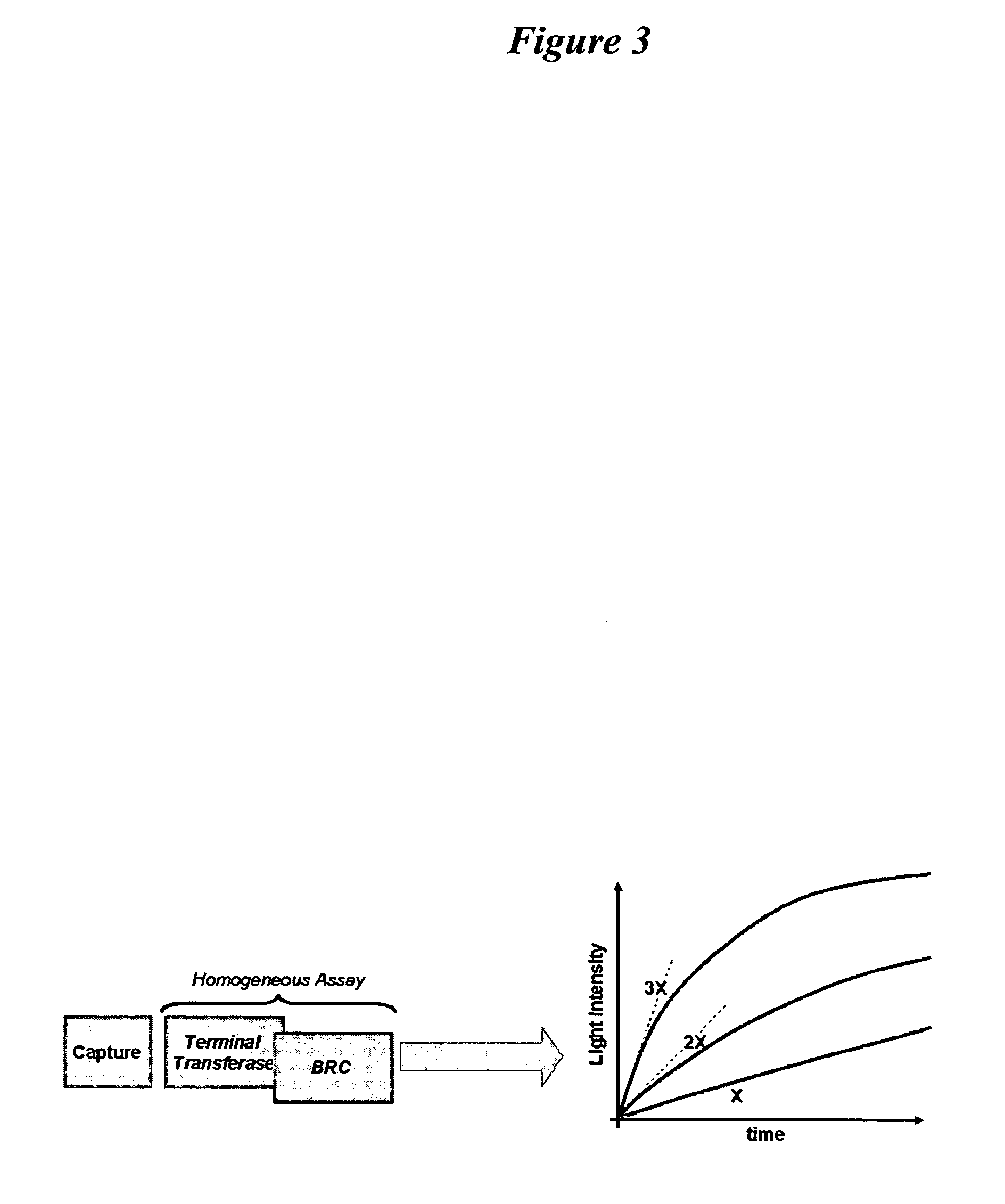Nucleic acid detection and quantification using terminal transferase based assays
- Summary
- Abstract
- Description
- Claims
- Application Information
AI Technical Summary
Benefits of technology
Problems solved by technology
Method used
Image
Examples
example 1
BRC Assay With Terminal Transferase
In an exemplary embodiment, a reporter oligonucleotide (e.g., d(A)18) may be covalently attached to a secondary antibody, for example a goat anti-mouse antibody, using known techniques (e.g., Schweitzer et al. Proc. Natl. Acad. Sci. USA 97:10113-119, 2000). Target proteins to be detected in a sample may be immobilized on a substrate using standard methods, as discussed above. A mouse monoclonal antibody specific for a given target protein may be added and allowed to bind to the target. After washing, the oligonucleotide-tagged goat anti-mouse antibody may be added and allowed to bind to the mouse monoclonal antibody attached to the target protein. Excess secondary antibody may be removed by washing. Many variations on this scheme, such as sandwich ELISA, are known in the art and may be utilized.
Terminal transferase (0.1 mU) may be added to the bound reporter oligonucleotide in buffer (20 mM Tris acetate, pH 7.9, 50 mM potass...
PUM
| Property | Measurement | Unit |
|---|---|---|
| Time | aaaaa | aaaaa |
| Color | aaaaa | aaaaa |
| Concentration | aaaaa | aaaaa |
Abstract
Description
Claims
Application Information
 Login to View More
Login to View More - R&D
- Intellectual Property
- Life Sciences
- Materials
- Tech Scout
- Unparalleled Data Quality
- Higher Quality Content
- 60% Fewer Hallucinations
Browse by: Latest US Patents, China's latest patents, Technical Efficacy Thesaurus, Application Domain, Technology Topic, Popular Technical Reports.
© 2025 PatSnap. All rights reserved.Legal|Privacy policy|Modern Slavery Act Transparency Statement|Sitemap|About US| Contact US: help@patsnap.com



